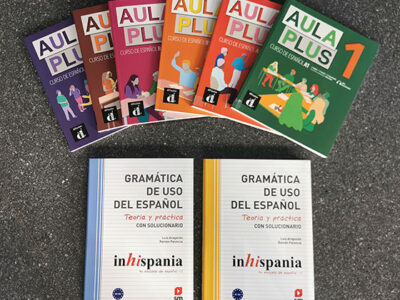In Spanish, nouns possess grammatical gender (masculine or feminine) and number (singular or plural). When using these nouns, we typically pair them with definite articles that match their gender and number. These articles—el, la, los, las—are fundamental for precise communication.
Definite Article Chart
| Number\Gender | Masculine | Feminine |
| Singular | el | la |
| Plural | los | las |
Examples:
- el señor (the gentleman)
- la señora (the lady)
- los señores (the gentlemen)
- las señoras (the ladies)
Choosing Articles Based on Word Endings
Words ending in -a are typically feminine, such as la mesa (the table) and la ventana (the window). Conversely, words ending in -o are usually masculine, like el humo (the smoke) and el nido (the nest). Plurality is often marked by words ending in -s, such as las tijeras (the scissors) and los plátanos (the bananas).
Exceptions to Note:
Some words defy these patterns, including el día (the day), el agua (the water), and la moto (the motorcycle). These exceptions require memorization.
Practice Exercise
Determine the correct definite article for each noun:
- _____ zumo (juice)
- _____ cumpleaños (birthday)
- _____ calle (street)
- _____ casas (houses)
- _____ pantalones (pants)
- _____ bromas (jokes)
- _____ cartera (wallet)
- _____ árboles (trees)
- _____ águila (eagle)
- _____ pared (wall)
- _____ libro (book)
- _____ tijeras (scissors)
- _____ lápiz (pencil)
- _____ papel (paper)
- _____ banderas (flags)
- _____ luz (light)
- _____ colores (colors)
- _____ peluche (stuffed animal)
Solutions:
- el zumo (the juice)
- el/los cumpleaños (the birthday/birthdays)
- la calle (the street)
- las casas (the houses)
- los pantalones (the pants)
- las bromas (the jokes)
- la cartera (the wallet)
- los árboles (the trees)
- el águila (the eagle)
- la pared (the wall)
- el libro (the book)
- las tijeras (the scissors)
- el lápiz (the pencil)
- el papel (the paper)
- las banderas (the flags)
- la luz (the light)
- los colores (the colors)
- el peluche (the stuffed animal)
Key Grammatical Insights
Gender Agreement
Definite articles must match the noun’s gender:
- Masculine singular: el hombre (the man)
- Feminine singular: la mujer (the woman)
Pluralization Rules
- Add -s to articles for plural nouns: los libros (the books), las mesas (the tables).
- Nouns ending in consonants add -es: los colores (the colors).
Pronunciation Exceptions
Feminine nouns starting with stressed a/ha (e.g., el agua) use el in singular for ease of pronunciation but retain feminine gender: las aguas (the waters).
This guide provides a foundation for mastering Spanish definite articles. Regular practice with gender and plural patterns will enhance fluency and accuracy in everyday communication.



